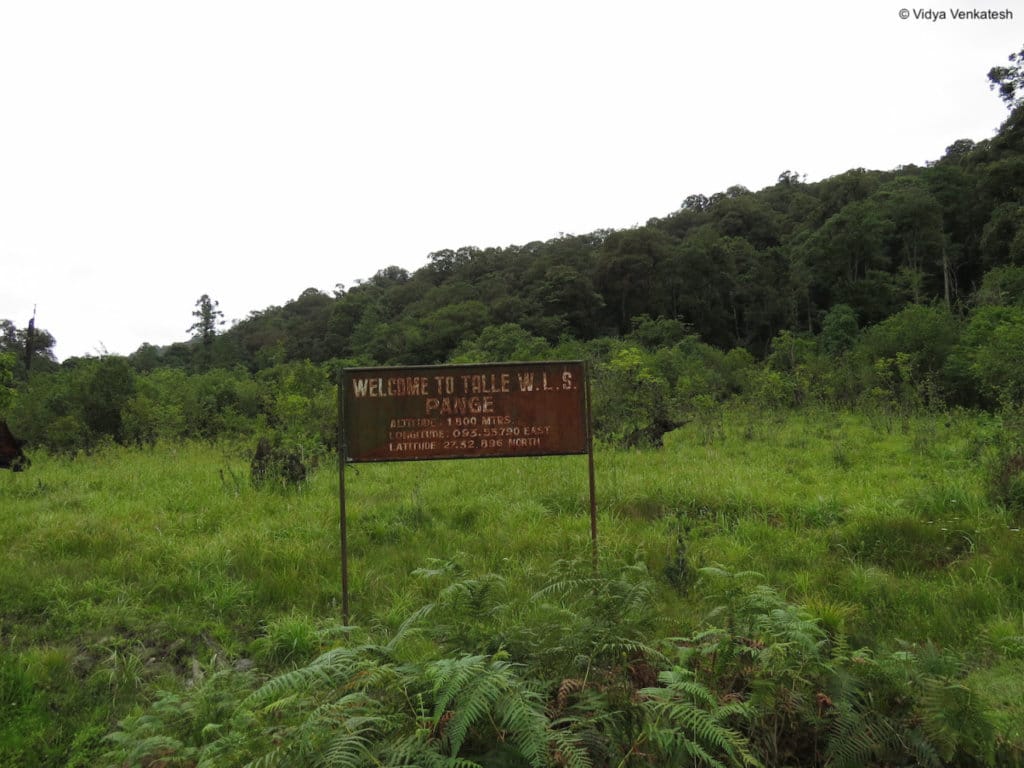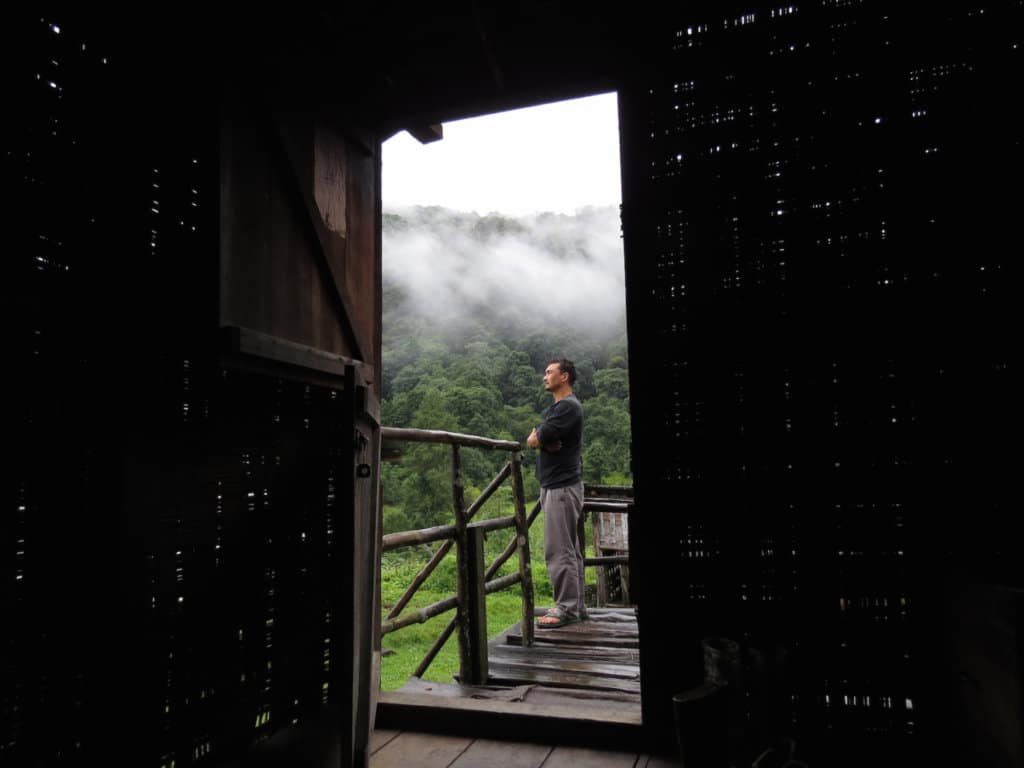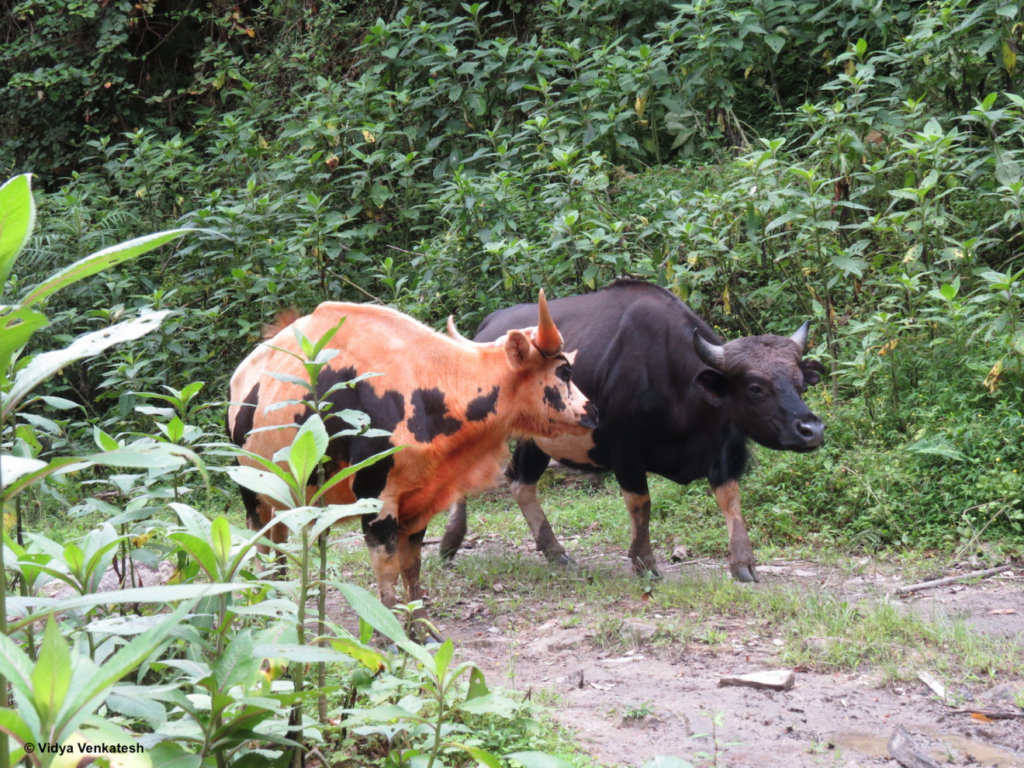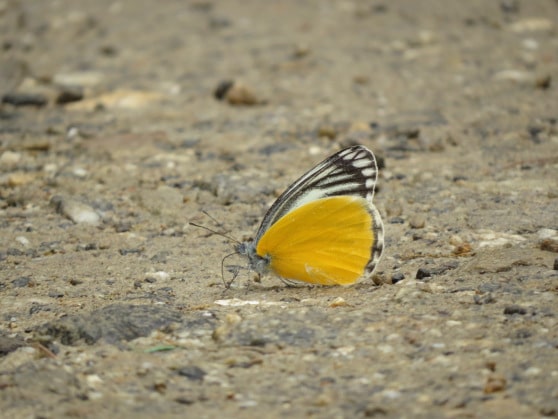A visit to the land of Apatanis – Ziro
03th September, 2019
Vidya Venkatesh
Having created a wishlist of wildlife species that I’d like to see, I enjoy planning my trips around them. And so my recent trip to Talle Wildlife Sanctuary (Aug 15-23) was planned quite early this year and the target species this time were the Brown Gorgon and the Kaiser-e-Hind butterflies.
Getting to Talle WLS: We flew from Mumbai to Dibrugarh airport and hired a car from Dibrugarh to Ziro, via Lakhimpur. Since it was a long journey (around 300 kms), we overnighted at Lakhimpur and continued our journey the next morning. The first leg included a ferry crossing (at Bogibeel) over the Brahmaputra river (first ferry @ 8.50 AM, last ferry @ 4:00 PM – weather permitting). And the second leg from Lakhimpur involved an uphill drive until Ziro.

Though we enjoyed this entire journey, this was not the best route to reach Ziro, as we realized after reaching the place. The shortest route would be to fly to Lilabari airport (in Lakhimpur) or to Tezpur or Guwahati airport (in order to avoid the dependency on the ferry services).
At Ziro, we stayed at a homestay with Tatu and his family in a village called Siiro and then started our 10 kms walk next morning (Aug 17), from Mani Polyang to the Pange FRH.



Between Ziro (1500 mts) and Pange FRH (1800 mts) – the 10 kms walk was an easy one (not steep) and was pretty much the road for butterflying. Inspite of being a cloudy day, we managed to spot about 25 species of butterflies enroute. The Pange FRH is located beautifully with fencing around the compound and a small pretty garden just at the entrance. A watchtower is situated within this compound, which gives a lovely view of the surrounding forests and the landscape. This watchtower is also quite well positioned for birding. Some of the birds seen in & around the campus included the Plumbeous Water Redstart, Grey-headed Canary Flycatcher, Red-billed Leiothrix, White-throated Fantail.

Over the next two days, it rained heavily and we could barely venture out for a butterfly trail, except for an hour on the third day. While the sun decided to show up for a short while from about 12.30-1.30 PM, we quickly decided to take a walk (even though we’d anticipated it to be a short one!) along the same road to look for some butterflies.
The road uphill from here leads to the top of Talle WLS, which is about 30 kms away. However, due to rains this route was very slushy and we could hardly walk through it for a few meters (inspite of wearing our gumboots!).

On the first day Bala had had a glimpse of the Brown Gorgon and hence we were hoping to find it one of these days. With this motivation in mind, we walked along the route, eager to have another glimpse of this butterfly. To our luck, we did see the Brown Gorgon, but it kept flying rapidly back and forth without settling down at any spot for more than a fraction of a second. After patiently waiting for about 20 mins at the same spot, I decided to leave this fellow alone (while the others decided to wait for him to settle down); I continued walking with a hope to find some other interesting species along the way. While I did find an interesting skipper and a few other butterflies, there was a spot where I once again found the Brown Gorgon flying hastily and decided to wait for this individual to settle down. It took about 5-7 mins to fly around before it finally found and settled at a spot for mud-puddling. After giving it a few seconds, I approached it carefully and took a few long shots with my zoom camera so that I don’t miss out on an ID shot at least. Delightfully, it co-operated quite well and continued to mud-puddle peacefully while allowing me to take close up shots! It flew away only when I unknowingly disturbed it by trying to move away a leaf on which it was actually sitting.
These few minutes with this beauty satiated my eagerness to spot and photograph this butterfly! I was now ready to focus on other butterflies, which subconsciously I was ignoring in my quest to find this beauty 🙂
Also, not to miss were the mithuns (Bos frontalis) found in this area. The mithun exists both in wild and semi-domesticated form. This animal has religious significance and is closely entwined with the socio-cultural life of the people. Traditionally, the mithun is a considered to be an asset and is allowed to move freely in jungle until it is either used for food on festive occasions and marriage feasts, or for barter. I was victim to one incident during this trip whereby at a place there were 15 mithuns hastily following me while I was petrified and tried to run away from them. It was later that I learnt that the owners feed these animals with salt as part of their diet. Due to this, these Mithuns are usually attracted to any human being walking along the road and can get as close as licking someone in anticipation of some salt feeds 🙂

The next day was again a rainy day and our optimistic thought of having some sunshine by noon didn’t yield any results. However, all these rainy days gave us a good opportunity to sit in the kitchen-cum-dining area and have some conversations with the locals who were at the FRH to help us out. Tama, our guide was a very good source of information and helped us understand a lot about the Apatani community (which he belonged to) and their traditions.
Apatanis are a tribal group of people living in the Ziro valley. Though this place is dominantly occupied by Apatanis, there are also some Nyshi tribe families living in this area. The Apatanis are amongst the few tribes in the world who worship nature. They have immense knowledge of natural resource management and conservation through traditional practices. The community also practices a unique method of rice-fish cultivation whereby along with paddy, fish is also reared in the fields. Apart from this, Ziro valley is also internationally known for its annual music festival held in September (information about Ziro Festival of Music – http://zirofestival.com/).

Our only hope was on the last day, the 10km-walk downhill towards Mani Polyang. Bala and VK had 3 more days in hand as their return flight was only on 26th Aug. However, they too were disappointed with the weather condition up here at Pange and decided to come along with us to Ziro where they could possible do a few butterfly trails locally. Hence, all four of us walked down the 10 km-walk. Though we didn’t see much rain all through the walk, to our surprise there were hardly any butterflies seen along the route.

On reaching Mani Polyang, we had two cars waiting to pick us up and drive to Tatu’s place at Siiro. After a long walk and a tiring day, we were delighted to be welcomed by Tatu’s wife with some hot tea and some hot water to freshen up.
The last day before leaving for Lakhimpur, we decided to go up to the famous Shivling at Ziro, Sidheshwar Nath Temple. It is known to be the highest Shivling in the world with a height of 25 feet, discovered by a woodcutter in the year 2004. This Shivling is about 4 km drive from Hapoli town of Ziro.

Some of the other diversity seen in this area –








Subscribe to our blog
Get the latest posts in your email
